Text
This film is a very interesting choice as a jukebox musical, as it is not often considered a musical in the traditional Hollywood sense, and it's songs aren't entirely plot-driven. Still, how do the songs contribute to the narrative and the comedy of the film in unconventional ways?
The Blues Brothers
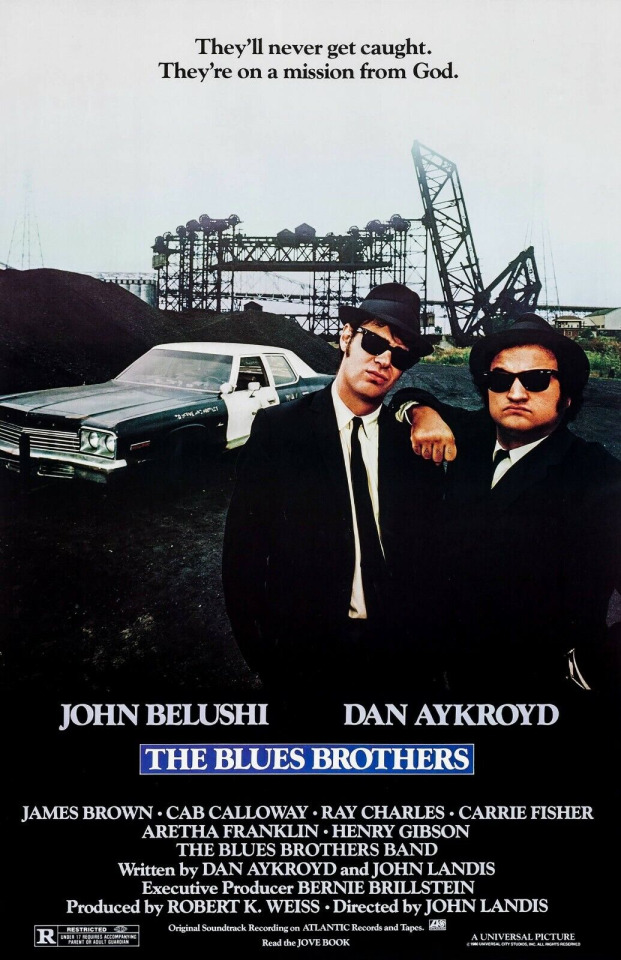
What are the social aspects within the film’s narrative that align with the film’s songs?
The Blues Brothers establishes the group of Nazi’s that follows them around as a central villain and point of ridicule throughout the film. Policing in general and law enforcement are also another social aspect within the narrative as both Jake and Elwood are running from the law. The film pokes fun at the extreme lengths law enforcement takes to arrest the Blues Brothers and their failure to do so. The film has several car chases with one spanning over 20 minutes, and a record of one hundred and four cars destroyed during filming. These ridiculous stunts constantly reaffirm that the Blues Brothers are on the other side of law enforcement. This type of narrative–music as rebellion and performance as protest–is bolstered by the film’s Rock and Roll and R&B soundtrack.
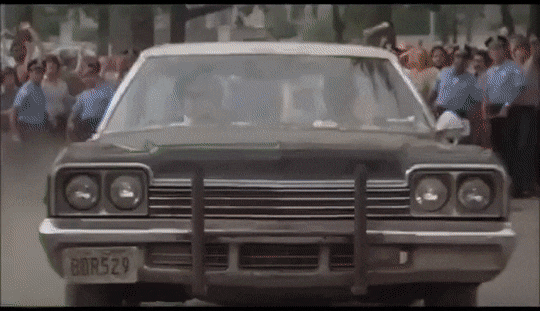
How do the historiographies of previously recorded songs inform audience relationships with the musical’s narrative and performers?
The historiographies of these previously recorded songs are what make this film special. The audience already has strong ties to the iconic performers and their songs, so any decontextualization for narrative continuity is minor. That is to say, this film doesn’t attempt to disguise performers like Aretha Franklin, Ray Charles, and Cab Calloway. It embraces their presence and the influence they hold as musicians. For example, “Think” by Aretha Franklin was released during the civil rights movement. When she performs it in The Blues Brothers, the narrative shifts the song's original meaning. Her character Mrs. Murphy asks her husband to think before he leaves to go off with the band. Despite this shift, the song’s original context is still very attached to the performance.
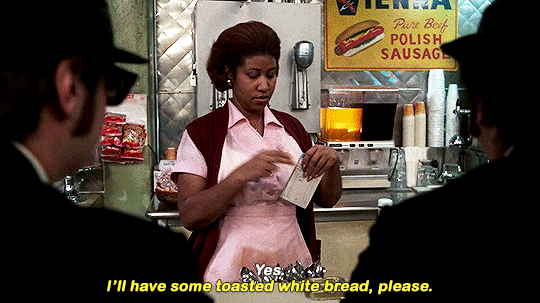
youtube
What musical genre/style drives the film’s score, and how does the genre/style (re)define the film as a musical?
Soul and R&B drive the film’s score with performances like “Think” performed by Aretha Franklin, “Minnie the Moocher” performed by Cab Calloway, and “Shake A Tail Feather” by Ray Charles. I think this choice of genre defines The Blues Brothers unique feel and makes the dry humor and slapstick comedy so successful. Despite being set in 1980, the film pays homage to iconic performers of the late 50s and 60s. Elwood and Jake are even made fun of for their black hats, sunglasses, and suits, but they maintain their signature “old-school” style throughout. The film's commitment to incredible performers is just one of the reasons it has become a classic.
youtube
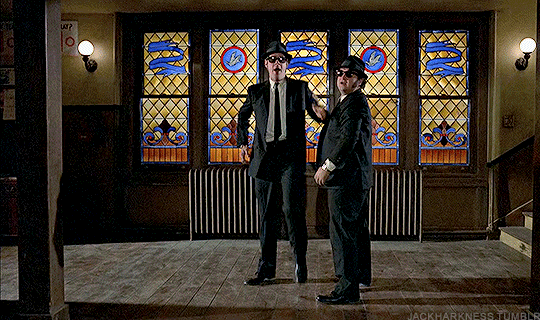
15 notes
·
View notes
Text
I've never heard of this film, and it sounds very interesting! How do you feel about the Mamma Mia comparisons - do you think that is a reductive analysis of the film or do you think the comparisons are understandable? What might Walking on Sunshine have that Mamma Mia lacks?
Walking on Sunshine (2014)

Walking on Sunshine is a 2014 British jukebox musical romantic comedy-drama film directed by Max Giwa and Dania Pasquini. The film features popular hit songs from the 1980s and is often compared to Mamma Mia!. The plot of Walking on Sunshine revolves around a young woman who travels to a beautiful coastal village in Italy to attend her sister's impromptu wedding. She soon discovers that the groom is her ex-boyfriend whom she’s still in love with. The story unfolds with a backdrop of sunny beaches and features plenty of singing and dancing to iconic 80s hits. The film is known for its energetic musical numbers and vibrant settings, even though it received mixed reviews for its storyline and character development.

What are the social aspects within the film’s narrative that align with the film’s songs?
In Walking on Sunshine, the use of vibrant 1980s pop songs directly correlates with the film’s themes of love, joy, and summer romance. Each song is chosen to enhance the film's emotional landscape and reinforce the relationships and conflicts between characters. For instance, the title track "Walking on Sunshine" by Katrina and The Waves is emblematic of the film's overall atmosphere of celebratory love and carefree spirit. The social context here is a nostalgic callback to the 1980s, a time perceived as colorful and full of energy, which mirrors the scenic, lively Italian wedding setting in the film.
youtube
How do the historiographies of previously recorded songs inform audience relationships with the musical’s narrative and performers?
The songs selected for Walking on Sunshine carry with them decades of history and individual memories, which help to establish a deeper connection between the audience and the narrative. The film's remix/rendition of "Girls Just Wanna Have Fun" and "Wild Boys" are pivotal in invoking a specific emotional and cultural recall from the audience. "Girls Just Wanna Have Fun," a feminist anthem of self-expression and independence, resonates with the film’s portrayal of strong, independent women navigating love and personal desires. This rendition allows the audience to connect with the characters' journeys through a familiar lens of empowerment and youthful rebellion. This song is interwoven with "Wild Boys" by Duran Duran. With its wild and energetic vibes, "Wild Boys" is used to underline themes of unruly passion and the tumultuous relationships among the characters. The use of these songs (as well as the costume choices in these scenes) not only enhances the narrative but also activates the audience's personal and collective memories, influencing their reception of the film's events and character arcs.
youtube
What musical genre/style drives the film’s score, and how does the genre/style (re)define the film as a musical?
Walking on Sunshine leverages the pop genre, particularly hits from the 1980s, as its driving musical force. Unlike traditional musicals that might rely on Broadway-style numbers, this film’s score is composed entirely of pre-existing pop songs. This choice significantly redefines the film’s classification within the musical genre by merging pop culture with cinematic storytelling. The upbeat and synthesizer-heavy music typical of the 1980s not only supports the film's energetic dance sequences and vibrant aesthetics but also modernizes the musical genre for an audience that might not connect with traditional musical theater. This redefinition makes the genre more accessible and relatable to a broader, possibly younger audience.
youtube
14 notes
·
View notes
Text
I also thought "I Will Follow Him" was a religious song from this movie!! I love this film and I think your analysis is great. I like how you pointed out that Deloris has a connection with music from a young age. How are different musical styles/themes blended through the personalities of other characters throughout the film?
Sister Act (1992)
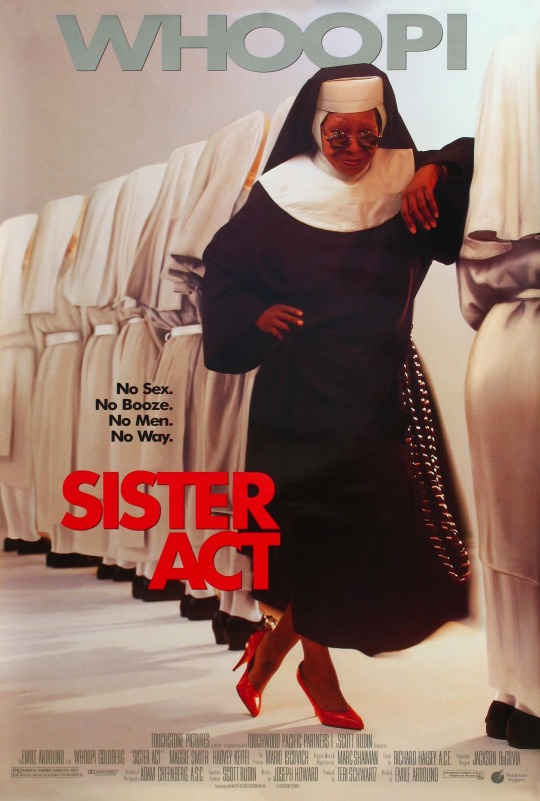
Directed by Emile Ardolino in 1992, Sister Act is a comedy film starring Whoopi Goldberg as Deloris Van Cartier, a lounge singer who witnesses a murder and is placed in protective custody in a convent. Disguised as a nun, Deloris clashes with the strict Mother Superior (played by Maggie Smith) but ultimately helps transform the struggling choir into a musical sensation. Along the way, Deloris finds redemption, friendship, and a sense of purpose. The film combines humor, music, and themes of empowerment and sisterhood to deliver an uplifting and entertaining story.
Deloris' backstory in Sister Act reveals a poignant journey from her childhood in a Catholic school to her adult life as a singer in Reno. As a child, Deloris attended a Catholic school, presumably imbued with the teachings and traditions of the Church. However, for reasons undisclosed in the film, she ultimately departed from that environment, symbolizing a rupture in her connection to her faith and the Church.
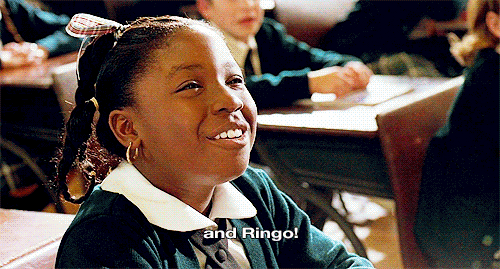
Years later, Deloris finds herself pursuing a career as a singer in Reno, embodying a lifestyle far removed from her religious upbringing. Her departure from the Church as a child and her subsequent immersion in secular pursuits represent a thematic departure from spiritual values and community ties. However, the narrative arc of Sister Act intricately weaves Deloris' return to the Church into its storyline. When Deloris becomes a witness to a crime and is placed in protective custody in a convent, she is forced to confront her past and reconcile with her roots. Through her experiences within the convent, particularly her involvement in revitalizing the choir, Deloris undergoes a profound personal and spiritual transformation.

The film eloquently explores Deloris' initial apprehension towards convent life, juxtaposed against the urban landscape of San Francisco. This juxtaposition serves as a metaphorical reflection of societal disarray, wherein the Church stands as a beacon of hope amidst urban decay. Deloris' transformative impact on the choir symbolizes the catalytic force of individual agency within communities undergoing profound change. Through the medium of music, both Deloris' internal pilgrimage and the city's socio-cultural metamorphosis converge, highlighting the transcendent power of artistic expression to inspire collective renewal and redemption.

What are the social aspects within the film’s narrative that align with the film’s songs?
The social aspects within the film's narrative align with the film's songs in several ways. 1. Empowerment and Self-Discovery: Many of the songs in the film convey themes of empowerment and self-discovery, mirroring Deloris' journey as she finds her voice and purpose within the convent. Songs like "I Will Follow Him" and "My God (My Guy)" reflect Deloris' transformation from a self-absorbed performer to a woman who finds fulfillment in helping others and embracing her newfound community. 2. Unity and Sisterhood: The film's songs often emphasize themes of unity and sisterhood, echoing the bonds formed among the nuns despite their differences. Songs like "Hail Holy Queen" and "Just a Touch of Love" celebrate the camaraderie and support found within the convent, highlighting the importance of solidarity in overcoming challenges. 3. Redemption and Forgiveness: Through songs like "Bless Our Show" and "If You Wanna Be Somebody," the film explores themes of redemption and forgiveness, emphasizing Deloris' journey towards redemption as she confronts her past and seeks forgiveness from both herself and others.

How do the historiographies of previously recorded songs inform audience relationships with the musical’s narrative and performers?
As for the historiographies of previously recorded songs, they inform audience relationships with the musical's narrative and performers by adding layers of familiarity and nostalgia. Many of the songs featured in Sister Act are well-known hits from the 1960s and 1970s, such as "I Will Follow Him" by Little Peggy March and "My Guy" by Mary Wells. These songs evoke memories and associations from the past, connecting audiences to the film's setting and characters on a deeper level. Additionally, the use of familiar songs allows the film to play with audience expectations and reinterpret these songs within the context of the narrative, in this case changing love songs into songs praising God, creating moments of surprise and delight.

What musical genre/style drives the film’s score, and how does the genre/style (re)define the film as a musical?
The musical genre/style that drives the film's score is primarily gospel, with elements of soul and R&B. This genre/style redefines the film as a musical by infusing it with a vibrant energy and spiritual resonance that complements the themes of redemption and sisterhood. The use of gospel music not only adds authenticity to the setting of a convent but also elevates the emotional impact of key moments in the narrative. Furthermore, the incorporation of soul and R&B elements reflects the diverse backgrounds of the characters and contributes to the film's infectious sense of joy and celebration. Overall, the fusion of gospel, soul, and R&B genres in the film's score creates a dynamic musical experience that enhances the storytelling and leaves a lasting impression on audiences.

Deloris' journey of rediscovery and reconciliation mirrors the larger theme of redemption and the cyclical nature of faith. Deloris' return to the Church symbolizes not only her individual reconciliation but also a broader exploration of forgiveness, belonging, and the enduring power of faith to guide one back to their true self. In essence, her departure from and eventual return to the Church serve as a narrative framework through which the film explores themes of identity, redemption, and the enduring journey towards spiritual fulfillment.
youtube
12 notes
·
View notes
Text
I've never heard of this film, and just by hearing the synopsis of it and looking at some images I would have never guessed it would be a musical! How does the film use music as a vessel to convey its darker and more uncomfortable themes? How might the film be different if the same themes were played as a straight drama rather than as a satirical musical?
Romance and Cigarettes
Today, I'm diving into the world of jukebox musical films, and my pick is the underrated gem, "Romance and Cigarettes." Strap in for a wild ride of love, music, and unexpected moments!
youtube
Social Aspects and Musical Narratives: "Romance and Cigarettes" is a whirlwind of emotions, and its songs serve as the heartbeat of its narrative. The film explores themes of love, infidelity, and familial bonds, and each song mirrors the characters' inner turmoil and desires. For instance, when characters are at odds with their partners, songs like "Piece of My Heart" by Janis Joplin or "I Want Candy" by Bow Wow Wow intensify the emotional tension on screen. The juxtaposition of classic tunes against modern settings adds layers of complexity to the characters' struggles, highlighting the timeless nature of human relationships.
youtube
Historiographies and Audience Relationships: What sets "Romance and Cigarettes" apart is its use of previously recorded songs to drive the story forward. These iconic tracks carry their own histories and meanings, which enrich the audience's connection to the film's narrative and performers. When we hear Elvis Presley's "Trouble" or James Brown's "It's a Man's Man's Man's World," we're not just listening to music; we're tapping into a collective cultural memory that enhances our understanding of the characters' experiences. The familiarity of these songs fosters a sense of nostalgia and empathy, drawing audiences deeper into the film's world.
Musical Genre and Style: "Romance and Cigarettes" defies traditional genre boundaries, blending elements of rock, pop, and soul to create a dynamic and eclectic score. This mishmash of musical styles reflects the film's unconventional narrative structure and characters, (re)defining it as a jukebox musical unlike any other. Whether it's Kate Winslet belting out "And When I Die" or Christopher Walken serenading us with "Delilah," each performance adds a unique flavor to the film's overarching musical tapestry.
youtube
In conclusion, "Romance and Cigarettes" is a bold and refreshing take on the jukebox musical genre, weaving together a tapestry of music, emotion, and storytelling that captivates audiences from start to finish. Can't wait to hear your thoughts!
youtube
13 notes
·
View notes
Text
I appreciate how you mentioned the two very different time periods involved in constructing the film, and how these time periods are blended through music. How might this film be a precursor for modern jukebox musicals, while often look at the past from a few decades later? How have jukebox musicals changed since Meet me in St Louis?
Meet Me in St. Louis_Roundtable 3

Meet Me in St. Louis follows the Smith family living in St. Louis the year before the 1904 World’s Fair. Esther Smith, played by Judy Garland, is the middle “child” of five siblings but is notably the most outgoing, and thus the lead, of her entire family of eight. Garland sings most of the featured songs, including those original to this film: "The Trolley Song", "The Boy Next Door", and "Have Yourself a Merry Little Christmas”. Most of the remaining songs we popular during the time of the World’s Fair.
Social Context for Musical Relevance
youtube
youtube
This film straddles two remarkably different eras of US history. The beginning of the 20th century (when the film is set) marked great changes in industrialization and first-wave feminism, while the 1940s (when the film was made) can be largely characterized by WWII and FDR’s final term. Two songs - “The Boy Next Door” and “Over the Bannister” balance these two times while mostly serving to satisfy the 1940s audience. “The Boy Next Door” follows a conversation between Esther and her older sister, Rose, who leaves her sister with the sentence “My dear when you get to be my age you’ll learn that there are more important things in life than boys”. The first few scenes of the film cover the fact that Rose, despite her “spinster” age, is not yet married. While this isn’t necessarily problematized it is heavily emphasized. Instead of following in her sister’s footsteps, Esther yearns for love and attention but seeks it out on her terms. Her relationship with the boy next door, John Truett, begins with these two songs. Last week we discussed Altman’s “inevitable couplings”: this pairing, despite falling into the heteronormative framework and finality of so many other musicals, does require effort and initiation from Esther’s character specifically. When John first kisses Esther, long after the performance of these songs, she hesitates. While this relationship is a goal for Esther, she prioritizes her family and personal needs. Rose and Esther’s overall characters and personalities are reminiscent of the feminist movement they harken from, but their ultimate decisions to settle down with comfortably wealthy men aim to please an audience engulfed in war, loss, and instability.
The Cultivation of Christmas Cheer and Nostalgia
youtube
Though half the songs are original to the score, the pieces that make this a jukebox musical serve mainly to cultivate nostalgia and joy. Again, the films release during WWII shaped the messaging required or desired by audiences. “Skip to Ma Lou” is sung to the tune of “Yankee Doodle” and other short ditties popular in the late 19th and early 20th centuries but likely still familiar to adult audiences in 1944. This party scene as a whole evokes normalcy, making the plot and characters more desirable and relatable. Other songs included in the score are “auld lang syne” and “the first noel”, some of the oldest Christmas songs that maintain their relevance to this day. Meet Me in St. Louis is often categorized as a Christmas movie despite only the last 20 or so minutes being set during the holiday season. Including these familiar songs in the score sends clear messages about the persistence of peace and being in communion with one another. These songs don’t necessarily have specific or relevant histories but they do have age-old recognition.
Melodrama Meets Musical
youtube
Meet Me in St. Louis combines opera, show tunes, and classical music to create a sound that effortlessly blends into the diegesis of the film. Erin Blakemore notes how the film lacks large, spontaneous musical numbers despite all the crowd scenes and possibilities for such fanfare. Rather, the creators integrated music into the Smith family’s regular routines: their parties and goodbyes, moments of comfort and joy. The rest of the score is used more like it would be in a non-musical drama as a sort of choral, background send-off. This movie is undoubtedly still a musical, but it's more “natural”, and perhaps more aligned with the folk musical, than the others we’ve analyzed.
@theuncannyprofessoro
14 notes
·
View notes
Text
I think this film choice is a really nice contrast to the reading, which discusses pop music as the basis for jukebox musicals rather than pre-existing musical songs being repurposed for another musical. How does Kern control the way his own legacy is perceived, rather than if someone else had made the film in his honor?
Roundtable 3: Till The Clouds Roll By (1946)
Richard Whorf's Till the Clouds Roll By is a 1946 biopic of American Broadway pioneer Jerome Kern. It features renditions of Kern's famous songs from his musical plays performed by contemporary stage artists. The film follows Kern's journey from his early days as a struggling songwriter to his rise as one of the most influential figures in American musical theater.
Jerome Kern was an American composer whose breakthrough came with the musical Show Boat (1927). Throughout his career, Kern composed numerous hit songs that became standards of the American songbook. Kern's influence extended beyond Broadway, as he also composed music for Hollywood films. He received multiple Academy Award nominations for his film work, including for the score of "Swing Time" (1936), which featured the classic song "The Way You Look Tonight."

What are the social aspects within the film’s narrative that align with the film’s songs?
In Till the Clouds Roll By, every song serves as a snapshot from one of Jerome Kern's musicals. Each of his musicals has various themes that are reflected in these performances. For instance, the film delves into the pursuit of artistic success and recognition within the competitive world of musical theater, as seen in the song "Make Believe" from Showboat. Performances of songs like "Can't Help Lovin' Dat Man" and "The Folks Who Live on the Hill" create sentiments of longing, desire, and devotion, mirroring the characters' experiences of love and heartache against the backdrop of their personal and professional lives.
Through these performances, audiences are transported into the intimate moments of the characters' lives, witnessing the highs and lows of their relationships unfold on screen. The emotional depth and vulnerability conveyed through these songs resonate with audiences on a profound level, inviting them to reflect on their own experiences of love and longing.
2. How do the historiographies of previously recorded songs inform audience relationships with the musical's narrative and performers?
By incorporating these well-known songs into the film, Till the Clouds Roll By establishes a connection with audiences who may be familiar with the original recordings. The historiographies of these songs evoke a sense of nostalgia and recognition, inviting audiences to engage with Kern's work on a deeper level. As audiences listen to familiar tunes reinterpreted within the context of the film, they are reminded of past performances and experiences, enriching their understanding and appreciation of the narrative unfolding on screen. Each performance is set against the backdrop of theatrical stages that include similar set designs and costumes to those of Kern's musical plays.
A notable example of this homage is Caleb Peterson's rendition of "Ol' Man River" from Kern's seminal work, Show Boat. In the film, we see the character Joe, a Black dock worker grappling with the struggles faced by African Americans along the Mississippi River. Peterson's performance captures the essence of Kern's vision for the film. He is dressed in attire similar to Joe's character and surrounded by a stage design reminiscent of the riverfront setting.
youtube
However, the film takes an unexpected turn with Frank Sinatra's rendition of "Ol' Man River" towards the end. Sinatra's performance, set against the backdrop of a grand orchestra and adorned in an all-white suit, exudes an air of glamour and sophistication that diverges from the raw authenticity of Peterson's portrayal.
youtube
While Peterson's rendition authentically captures the struggles of marginalized communities and serves as a powerful commentary on racial inequality, Sinatra's interpretation risks overshadowing this narrative depth. The contrast between Peterson's portrayal of a Black dock worker and Sinatra's performance tinged with privilege and sophistication, may inadvertently dilute the real meaning behind the song, shifting the focus away from the authentic representation of racial struggle.

3. What musical genre/style drives the film’s score, and how does the genre/style (re)define the film as a musical?
Alberto Mira's "Introduction: The Hollywood Musical is Dead. Long Live the Hollywood Musical!" provides valuable insights into the evolution and significance of the Hollywood musical genre, which can be applied to understanding Till The Clouds Roll By. Mira's discussion of the Hollywood musical's cultural significance underscores the importance of the genre as a reflection of societal values and aspirations. Till the Clouds Roll By embodies this aspect by exploring themes of ambition, love, and social justice through its musical performances and narrative arcs. The film serves as a testament to the enduring appeal of the Hollywood musical genre and its ability to resonate with audiences across generations.
The film's score is predominantly driven by the musical genre/style of traditional Broadway and musical theater. This genre/style is characterized by orchestration, melodies, and elaborate vocal performances that serve to advance the narrative and evoke the emotions of the different characters. The genre/style of traditional Broadway and musical theater (re)defines the film as a musical by infusing it with elements such as elaborate song and dance numbers, theatrical staging, and larger-than-life performances. These elements serve to heighten the emotional impact of the narrative and create a sense of spectacle that is characteristic of the musical genre.
12 notes
·
View notes
Text
I was in a production of this musical in high school so it was very fun for me to hear your presentation on the film! I think it's really clever that the movie focuses a lot on how the music was perceived as so "rebellious" while using camp conventions to portray this music as a bit silly rather than evil or threatening. How else does the movie provide an alternative perspective to 1980s culture through its tone, characters, music, etc. ?

Rock of Ages
Rock of Ages is a 2012 jukebox musical styled as a comedic film involving the interweaving storylines of several artists trying to make it big in the rock music scene. The film is built around 1980s rock featuring songs from bands like Styx, Journey, Bon Jovi, Europe, and more.
What are the social aspects within the film’s narrative that align with the film’s songs?
The film is set in 1987 Los Angeles. As mentioned in the text "rock and roll, the first new wave of pop music, appeared then as a label which certainly seemed to be new to the mainstream, but its success has to be understood along social lines: white appropriation of Black music, marketing youth lifestyles, and encouraging teen consumerism" (7).

This wave of pop music was categorized by the social base it addressed. In Rock of Ages a small town girl Sherrie Christian (Julianne Hough) meets city boy Drew Boley (Diego Boneta) on the Sunset Strip as they try to launch their musical careers. The entire soundtrack utilizes rock from the 80s which was an extremely controversial period of music for its time leaving audiences heavily divided. This disparity between supporters and haters of the music is depicted in the film pinning rock listeners and churchgoers against each other.

Building up to the 80s and lasting throughout the decade, rock was criticized for explicit lyrics, themes of rebellion, and references to drugs use, violence, and sexual content. This created widespread paranoia among parents, religious groups, and conservative organizations about the impact of listening to this music. There were certain bands like Black Sabbath and Iron Maiden that raised concerns for a spread of Satanism. Rock, more so than anything, was known for challenging traditional social norms and values like gender roles and sexual morals. Artists like Prince and Madonna are known for these kinds of provocative lyrics and performances.
youtube
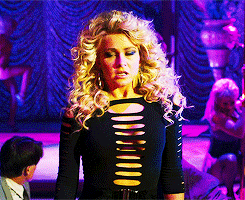
The songs within the film are emblematic of a period of rebellion, a genre dedicated to challenging norms and establishing its own realm of music. Songs like "I love Rock and Roll," "Wanted Dead or Alive," "I Want to Know What Love is," and "Hit Me With Your Best Shot" are all emblematic of societal reflections imposed onto the characters within the narrative. Catherine Zeta-Jones' character Patricia Whitmore is the film's main antagonist in her disdain for rock music. But quickly, through seduction of a famous musician, she is quickly swayed away from hatred and into a total state of enamor.
The music also serves to explore the faults of the rock industry as well by exploring all avenues of glitz, glamor, and obstacles.
How do the historiographies of previously recorded songs inform audience relationships with the musical’s narrative and performers?
As aforementioned, the history of rock not only permeates the soundtrack but the narrative as well. Though paranoia surrounding rock music came from conservative and religious groups fearing and overtaking of Satanists, many famous rock musicians and bands struggled with substance abuse. The star of the film, Stacee Jaxx (Tom Cruise) is a mirror into the lives of former rock stars struggling with the weight of their fame. Throughout the film he goes in and out of sobriety, though for the most part he remains absurdly intoxicated especially while performing.

The text discusses how music integrates itself with culture by influencing attitudes, fantasies, politics, and listening communities (7) and that it was much "easier to describe rock's style negatively - to describe what it wasn't" (8). Because rock was new, it was perceived to be threatening, especially because it was powerful. In the film specifically the characters revolve their lives around the music as if their existence depended on it.
Each character has their own relationship to the industry which are uniquely expressed through different rock artists and bands. Whilst picketing Stacee Jaxx and rock music in general, Patricia Whitmore (Zeta-Jones) tells the rock fans to hit her with their best shot, superbly vocalizing Pat Benatar's epic 1980 single.
youtube
When Sherrie struggles to make it big she lands herself a job in a strip club where she and the rest of the dancers harmonize alongside Mary J. Blige for a version of "Anyway You Want It."
youtube
But even those who fear the music at the beginning of the film learn to love it by the end.
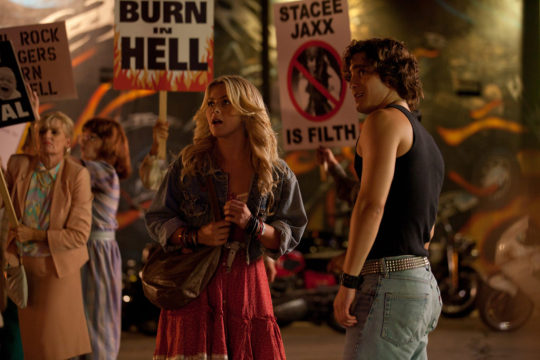
What musical genre/style drives the film’s score, and how does the genre/style (re)define the film as a musical?
Rock music is the SOUL of this film. It is the only music included which I think really defines the heart of the narrative and the power behind the battle of fighting for the music, as well as everyone's individual career. This influence is in the HAIR, their CLOTHES, their MAKEUP, and their connection to each other.
In order to examine the genre of the film that is inspired by the music, I want to just showcase what these artists looked like and how they performed their art.
Jon Bonjovi.
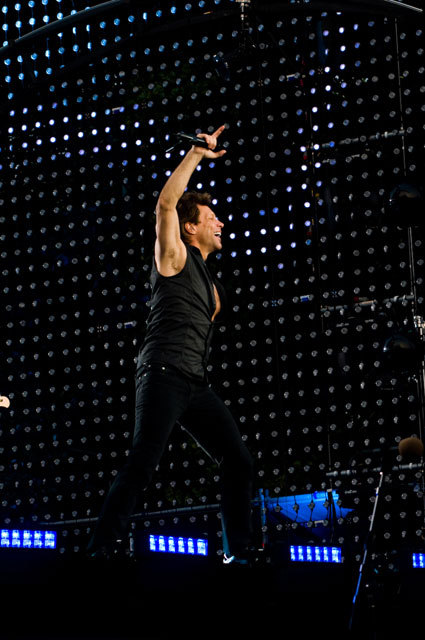
The vision herself, Pat Benatar:
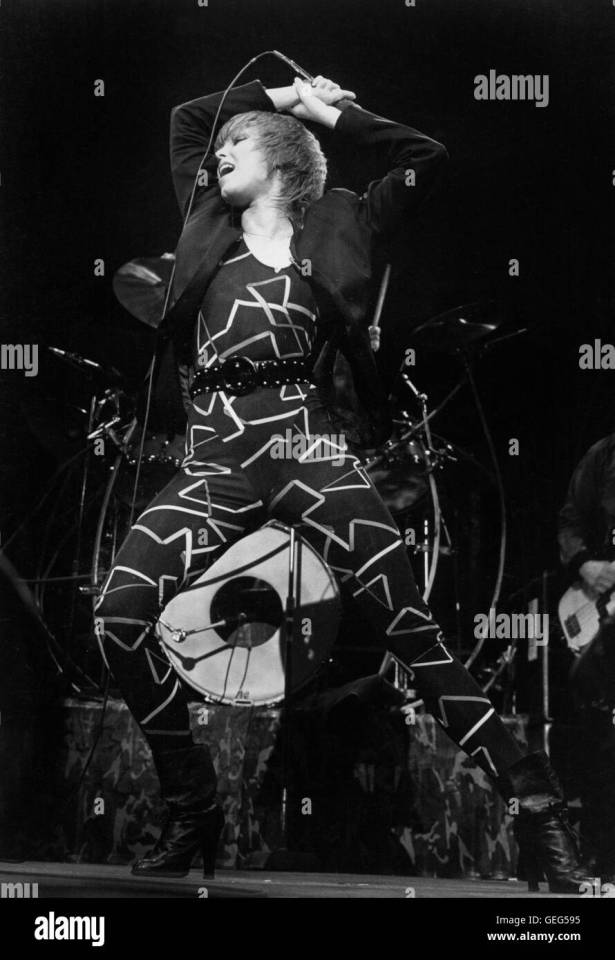
Whitesnake:

Def Leppard at their first concert:

To really capture this energy wouldn't have been possible for the film for what it intended to be as the songs have a bit more of a pop influence for the film, which I would argue makes the music more digestible in order to reach a larger audience. However, I believe keeping the songs in the same style would have created a more realistic tone for the film.
@theuncannyprofessoro
14 notes
·
View notes
Text
I think it's a bit unique that this film was made while The Who was still in popularity, rather than a retrospective on the band's legacy. Do you think this film was intended to be a sort of promotional endeavor for the band, or do you think the soundtrack was more of a jumping off point for a creative project? To what extent were the members of The Who involved in the creation and development of the film?
Roundtable III: A Musical In Disguise - Tommy (1975)

The film Tommy (1975), directed by Ken Russell, is a musical fantasy drama that follows a boy named Tommy after he watches his step father kill his father. After this incident, Tommy goes psychosomatically deaf, dumb, and blind. After Tommy discovers his great talent for playing the pinball machine, he accumulates a cult following that take his skills as divine powers. Eventually, Tommy regains his senses and attempts to sell cheap gimmicky products that he claims will give his followers his powers. Tommy is played by the harmonica player of the band The Who. The entire film is based on Tommy, the album by the who released in 1969.
What are the social aspects within the film’s narrative that align with the film’s songs?
During the 70s, society was characterized around large crowds of rock and roll fans flocking to prominent bands. Tommy accumulates a cult following because of his sensational pinball skills, and the music for the film comes directly from the album Tommy, by The Who, that were a prominent rock band in the 60s and 70s. In fact, the whole film is based on the album. During the 60s and 70s, it was not uncommon for rock and roll bands to be worshipped like they were profits or gods. One band could take over the world. In this film, Tommy is portrayed as the second coming of Jesus, granting abilities to his followers which come in the thousands. The song Pinball Wizard is the pinnacle song in the album that is also the main song in the film which Elton John performs. It is the main song that fills in the narrative of the film.
youtube
How do the historiographies of previously recorded songs inform audience relationships with the musical’s narrative and performers?
The previously recorded songs being from the album Tommy, by The Who, engage the viewer with the musicals narratives of a rock and roll story. Tommy's story is one of great success and then tragedy as his own fans murder his mother and step father. The band The Who has a similar tragic past. The Who concert disaster of 1979 is evidence of how many rock and roll bands are involved in tragic accidents or downfalls. Even though the incident occurred after the making of this film, the concept still applies. A rock and roll band wanted to make a film, so they made it a tragic, yet epic musical - one which reflects their own careers.
youtube
What musical genre/style drives the film’s score, and how does the genre/style (re)define the film as a musical?
This film is a rock musical, starring a rock artist, using a narrative from a rock song, and other rock music from that specific band. This style of music makes the whole film a rollercoaster of fantasy surrealism. From one scene to the next there is emotional tensions, to violent conflict, to perfect calm. These ups and downs in such fantastical ways represent a rock and roll song, or even the life of a rock and roll artist. Watching the film, don't know what's coming next, and it's the same with a band like The Who. As Alberto Mira states: "pop musical, like many established cycles, ends up being about pop music, pop stardom, and their legacies" (32).
youtube
15 notes
·
View notes
Text
This is a really interesting film for analysis as a jukebox musical. Fosse has another film, Star 80, that also talks about the exploitative dark side of the entertainment industry that many have also described as partially autobiographical of Fosse as a creator and star-maker. What are the through lines between All That Jazz and the other Fosse piece we watched in the class, Cabaret?
Roundtable 3: All That Jazz (1979) directed by Bob Fosse
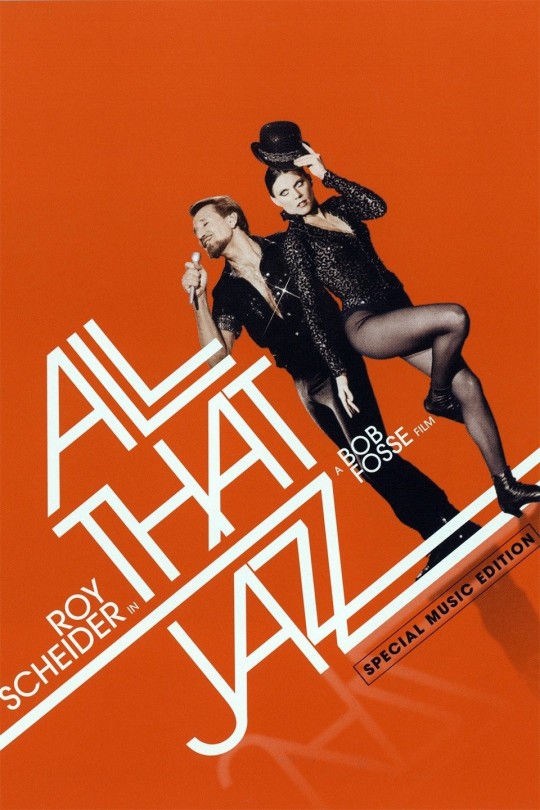
Question 1: What are the social aspects within the film’s narrative that align with the film’s songs?
The narrative of “All That Jazz” explores the dark side of entertainment. In the opening number, “On Broadway”, the audience is introduced to the allure of show business while being shown the grueling audition process.

The upbeat R&B song, performed by George Benson and popularized by The Drifters in 1963, complements the energized dancers and fast moving tryout. The lyrics of the song express longing and escapism, with the narrator dreaming of making it big on Broadway. However, beneath the glittering lights and promising opportunities lies a darker reality. The director, Joe Gideon, uses his artistic prowess and influence over the production to lead casting decisions based on who he wants to sleep with rather than talent.
He begins a sexual relationship with one of the dancers he chooses from the sequence, Veronica, and in a future scene he essentially breaks her down to tears in order to get the performance he wants out of her. To bring it back to “On Broadway”, the tension between the glamorous facade and the seedy underbelly of show business reflects another tension in the film which is a broader dichotomy in the entertainment world, where personal ambition often beats out artistic and personal integrity.
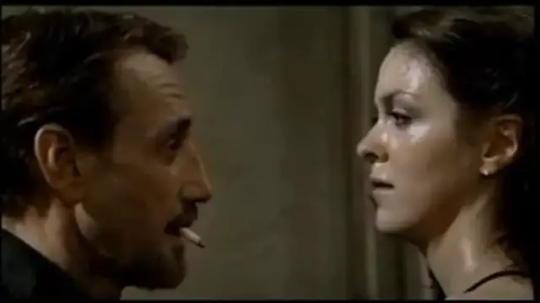
The scene between Veronica and Joe.
Another social aspect explored within the film’s narrative through song is the cyclical nature of life and art in “Everything Old is New Again”. The song was originally by Peter Allen in his 1974 album “Continental American”. As Joe grapples with his morality and attempts to reinvent himself creatively, the song serves as an important reminder of the cycle of birth, death, and rebirth, suggesting that trends and fashions often repeat over time. During the 1970s a large number of traditional values were being challenged and individuals sought to redefine themselves in the ever-changing and evolving world. Joe is able to find comfort and define himself with the comfort of the cyclical nature of art and life.
youtube
Question 2: How do the historiographies of previously recorded songs inform audience relationships with the musical’s narrative and performers?
The use of previously recorded songs in “All That Jazz” seeks to add layers of meaning to a specific audience familiar with their original contexts, an audience of Broadway and the style of bygone eras. For example, “Some of These Days”, a song associated with vaudeville performer Sophie Tucker, is used in a scene where Joe faces his mortality. Audiences familiar with Tucker’s career may interpret the song as a nod to the past, invoking a sense of nostalgia and paying homage to the rich history of stage productions and entertainment that predate Joe Gideon’s era which is inspired by Bob Fosse’s life.

Sophie Tucker
youtube
Similarly, “Bye Bye Love” originally by The Everly Brothers is used in a scene where Joe grapples with the dissolution of his relationships. The lyrics of the song become more significant in this context, reflecting Joe’s sense of loss and longing.
Question 3: What musical genre/style drives the film’s score, and how does the genre/style (re)define the film as a musical?
The music of “All That Jazz” encompasses a wide range of musical genres and styles including, jazz, pop, classic R&B, and traditional Broadway music. The eclectic mix reflect the diverse taste and influences of its director, Bob Fosse. By mixing the different genres, the film defies categorization and helps to redefine the musical genre.
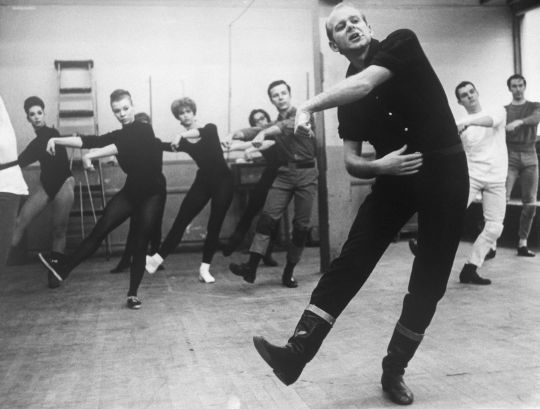
Bob Fosse in a situation similar to one we see Joe in many times during the film.
Unlike some jukebox musicals which adhere to a singular style or formula the film embraces experimentation and innovation. The film uses non-linear storytelling, surreal imagery, and unconventional musical numbers to challenge audience expectations. It doesn't feel like what one might think of as a musical, it feels more like a prolonged fever dream of a performance.

The Angel of Death that Joe converses with and performs for throughout the film in surreal scenes.
14 notes
·
View notes
Text
Roundtable: Across the Universe (2007) dir. Julie Taymor
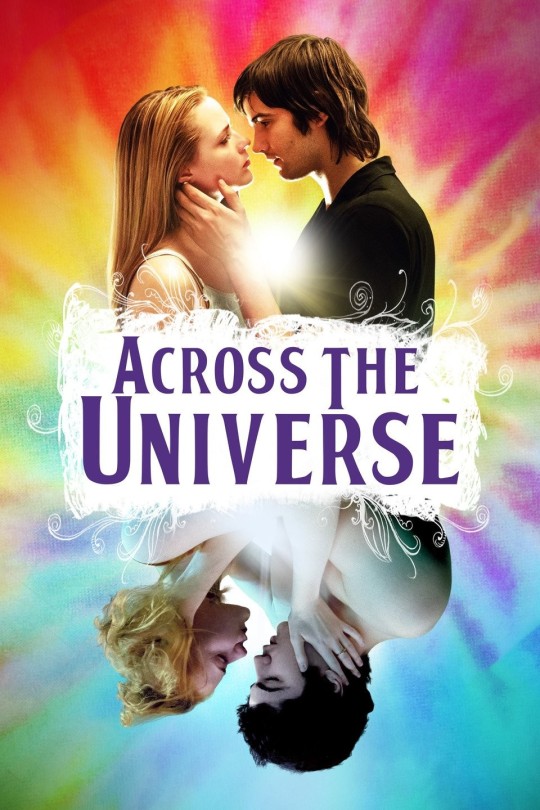
Across the Universe transforms thirty-three popular songs by The Beatles into a wacky musical odyssey that explores the highs and lows of youth counterculture movements in 1960s US and Britain. With major characters named Jude, Lucy, and Prudence who all have obvious namesakes from within the Beatles' discography, the lyrics and perspective of the bands' music informs the characters' attitudes and circumstances throughout the film. Though it's unclear whether the Beatles exist in the films' universe, which seems to be an imagined caricature of the 60s, its certain that Taymor believes their music captures the essence of the sixties, as the (mostly white and well-off) characters sorrowfully sing their way through the turmoil of the Vietnam War and the Civil Rights movement....

At times, this film relies on cinematic narrative expectations, and at others, the film feels like a two-hour long Beatles music video. Some creative risks are taken, such as an LSD-sequence or a highly choreographed interpretation of the military drafting process during the Vietnam War. Though the film is fun when it indulges in its wackiness, I found that it was stuck between following a narrative structure and subverting it, causing it to feel unsatisfying, disjointed and generally underdeveloped.
With this in mind, there's a lot of small characters and storylines that make the film a bit difficult to summarize. Here's a synopsis from Google:
When young British worker Jude (Jim Sturgess) sets sail for the United States in search of his father, he ends up meeting carefree college student Max (Joe Anderson) and his lovely sister, Lucy (Evan Rachel Wood), along with a cast of eccentric characters. As Jude and Lucy fall for each other, their relationship is threatened by the social upheaval that accompanies the Vietnam War.

Social Aspects Through Song
The "social aspects" of Across the Universe are conveyed through the films' songs in a way that is incredibly on-the-nose and un-subtle. In fact, nothing about this film is subtle. For instance, when unemployed artist Jude is upset with his booked and busy girlfriend for being too involved in the anti-war movement, he shows up at the nonprofit and starts singing "You say you want a revolution..." In another sequence, Max prepares to be screened for military service, and giant Uncle Sam posters come to life and start singing "I want you."
youtube
youtube
With such un-nuanced recreations of political events, I am unsure of what exactly this film is trying to say about the 1960s' political and social revolutions from a 2007 vantage point. On the contrary, perhaps the film is attempting to create an "objective" yet campy and fun retelling of 60s history with a focus on the youth, without deliberately trying to "say" anything new at all. With this non-argumentative lens, the film seems blissfully unaware of its own shortcomings, such as the unresolved sexism of its two male leads, or the surface-level characterization of Lucy and the heavily apparent absence of the second-wave feminist movement.
Perhaps the most questionable of this films missteps, though, is its treatment of race through song. The film's secondary cast features a queer Vietnamese female character, Prudence, who randomly disappears from the film a third of the way in. Then there is Jo-Jo. When it is revealed to the characters that Martin Luther King Jr. was assassinated, the film cuts to Jo-Jo, a Black man, singing at a bar, only to reveal that his sad song is actually about Sadie, the woman who left him. While social issues of race clearly loom over the characters' heads, the film employs the powers of the Beatles' "All You Need is Love" rhetoric to wash over any nuance pertaining to the topic. This is especially interesting since this rhetoric within actual hippie circles in the 1960s proved to be a clear failure.
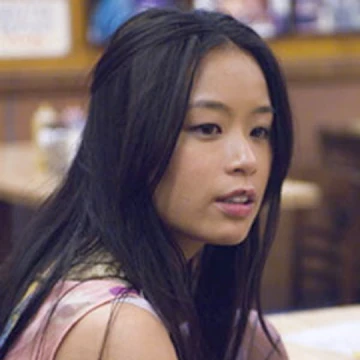
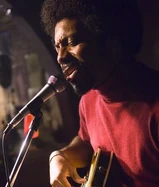
Musical Memories and Genre-bending
On the changing force of pop music within the movie musical format, Mira writes: "In assessing what pop songs bring to the musical, we must consider, firstly, that a song's meaning is conveyed not only through melody, rhythm, and lyrics: engaging with an audience's memories, viewpoints, and personal background can be powerful in unleashing meaning as well" (24). In this sense, I think Across the Universe transforms its musical source material and plays with audience's familiarity with its songs in a really fun and effective way.
The film's opening is a really great example of how it blends the audiences' diverging associations of a classic Hollywood musical versus a classic rock music video. These two juxtaposing numbers comprise the opening:
youtube
youtube
Within this introduction, we are already hit with three different musical styles: the Beatles' contemplative ballads through Jude, a more intense female rock voice, and a more classical "musical theatre" style through Lucy. However, all of the songs sung are by the same artist. In this way, the film often plays around with the melodies, keys, tempos, etc. of the original Beatles' songs in order to suit which character is singing a given song. I think this is a really clever way of making similar-sounding music feel dynamic enough to remain interesting for the span of a two-hour film while also serving practical narrative functions. The songs of the Beatles are also transformed to song like other artists or sub-genres of 60s rock and roll. For example, the character Sadie's songs are reminiscent of rock stars like Stevie Nicks or Janis Joplin, while Jo-Jo's skilled guitar playing is inspired by the likes of Jimi Hendrix. In this way, the film pays homage to several icons of the era, despite only using actual music created by one band of the time.
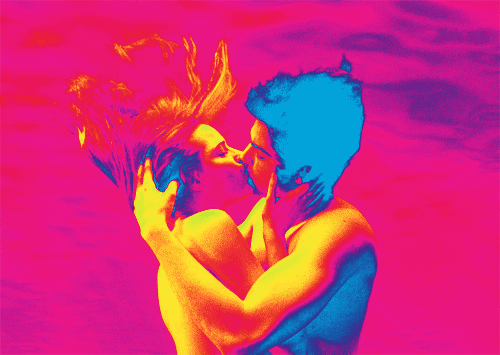
12 notes
·
View notes
Text
Lol I love Victorious!! I think Freak the Freak Out is a great choice to discuss the different kinds of musical numbers in the show. Like you said, I think the show definitely combines backstage musical numbers with more imaginative representations of the characters' internal feelings.
Roundtable presentation: Victorious
Victorious follows Tori Vega, an unassuming teenager who lands a coveted spot at Hollywood Arts High School, a prestigious performing arts school, after taking her older sister's place in a showcase. Surrounded by her talented classmates like Andre, Robbie, Jade, and Beck, Tori navigates the challenges of high school life with a focus on music, performance, and the ups and downs of artistic pursuits. The show utilizes humor, musical numbers, and a dual-focus narrative that explores not just romantic relationships, but also friendships, mentorship, and collaboration as Tori gains confidence and embraces her newfound passion for performing.

How does the series use dual-focus narrative as a strategic storytelling tool beyond heteronormative romantic pairings?
Victorious is more of a coming of age show. I think the central focus of this dual-focus narrative is mainly navigating highschool in a very competitive performing arts world, while juggling with the drama and complexities of being a teenager.
Trina and Tori’s dynamic is a prime example of this. While often played for laughs, they offer a unique dual focus on sibling rivalry and eventual support. Episodes explore the challenges of living in each other's shadows while ultimately showcasing a bond of care, even if expressed in a quirky way.
youtube
Cat and Jade’s friendship is another example. Their contrasting personalities - Cat's bubbly, seemingly innocent and dumb, and Jade's dry wit - create a dynamic that focuses on loyalty, acceptance, and navigating the intricacies of female friendship and girlhood.
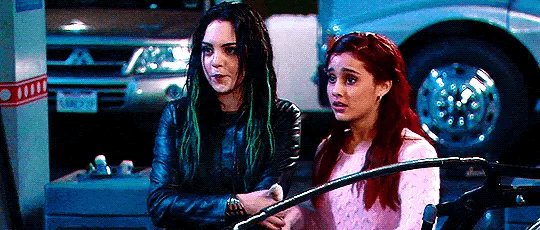
Often, the show adopts a "group focus" narrative, touching on themes of teamwork, navigating high school and the “que serás” of life after graduation. Victories at competitions, overcoming obstacles thrown their way by Sikowitz, or simply hanging out are all depicted with a group focus, fostering a sense of community and shared journey. Sikowitz, the eccentric yet insightful teacher, becomes a mentor figure for each character. The dual focus here explores themes of artistic growth, following one's passion, and overcoming self-doubt, with each character's journey receiving dedicated focus.
What are the “inevitable” couplings within the series and how are they accentuated through “cinematic” similarities and contrasts?
Beck and Jade’s love story is a classic "opposites attract" with cinematic parallels. Beck, the carefree charmer, is often contrasted with Jade's fierce and sarcastic personality. They use slow-motion moments, lingering glances, and dramatic lighting to emphasize their inevitable connection. Their contrasting personalities often lead to humorous conflicts. Jade's sharp wit clashes with Beck's laid-back demeanor, resulting in playful banter and witty exchanges. These comedic moments keep the relationship dynamic and prevent it from becoming overly sentimental. While slow-motion highlights their connection, their body language in everyday interactions can show their contrasting comfort levels. Beck might have a more open posture, while Jade might have crossed arms or a guarded stance, hinting at their underlying feelings and insecurities. Although, somehow, they seem to not be able to stay away from each other!

How does the series use musical numbers within and beyond the narrative world to replicate fairy tale, backstage, or folk musicals?
Diegetic musical numbers like "Freak the Freak Out" blur the lines between reality and the fictional performance. The song takes place during a moment in which Tori wants to prove herself and others that she is talented, in some way, it showcases her anxieties and at the same time, her confidence as she performs for the karaoke bar's crowd. On the contrary, Acoustic numbers like "You Don't Know Me" performed by Jade mirror the folk musical style, emphasizing personal growth and self-discovery. This stripped-down style allows for a more intimate portrayal of her character’s emotions and vulnerabilities, as she is often only portrayed as the punk, emo teenager with no feelings.
youtube
16 notes
·
View notes
Text
I've never seen the show, but I've always been intrigued by its premise and I really like the main casts' previous work! Though the show is a comedy with a comedic cast, how does the show handle serious topics with levity? What are the dynamics between the main four women, and how do they develop throughout the show?
Roundtable Presentations 2: Girls5eva (2021-2022, 2024-)
Girls5eva is a television musical series created by Meredith Scardino, and executive produced by Tina Fey, Robert Carlock, and Jeff Richmond. Set in New York City, the series centers around four members of a former girl group – Dawn, Wickie, Gloria, and Summer – as they navigate the highs and lows of reuniting for a second chance at stardom. Each character grapples with personal and professional challenges while rediscovering their passion for music and friendship.

How does the series use dual-focus narrative as a strategic storytelling tool beyond heteronormative romantic pairings?
In Girls5eva, the dual-focus narrative extends beyond heteronormative romantic pairings by centering on the friendships and professional endeavors of the main characters: Dawn, Wickie, Gloria, and Summer. While romantic relationships are present, they are not the primary focus of the storyline. Instead, the series delves into the complexities of platonic bonds, familial ties, and individual growth trajectories. Each character grapples with their own struggles, aspirations, and personal journeys, contributing to a rich and inclusive portrayal of human connections beyond traditional romantic narratives. This strategic storytelling tool allows Girls5eva to explore themes of friendship, ambition, and self-discovery in a nuanced and relatable manner, resonating with a diverse audience.
2. What are the “inevitable” couplings within the series and how are they accentuated through “cinematic” similarities and contrasts?One of the inevitable couplings is between Dawn and Wickie. Their dynamic is accentuated through cinematic techniques that highlight their contrasting personalities and aspirations. Dawn, portrayed as ambitious and driven, represents the pursuit of success in the music industry, while Wickie embodies authenticity and genuine passion for music. Their friendship, though initially fraught with tension, evolves into a symbiotic relationship that adds depth to the storyline.
Throughout the series, Dawn and Wickie's interactions are characterized by moments of intimacy, vulnerability, and mutual support, which subtly hint at a deeper emotional connection. These moments are juxtaposed against their differing approaches to music and fame, creating compelling contrasts that drive the narrative forward.
As Robynn Stilwell suggests, the series interweaves these character arcs with themes of friendship and personal growth, mirroring the nuanced storytelling found in shows like "Smash" and "Nashville." Through cinematic techniques such as juxtaposition and thematic motifs, the contrasts between Dawn's drive for success and Wickie's genuine passion for music are accentuated, creating compelling interactions that resonate with viewers.

3. How does the series use musical numbers within and beyond the narrative world to replicate fairy tale, backstage, or folk musicals?
Within the narrative world of the series, musical numbers are seamlessly integrated into the storyline, often advancing the plot or providing insight into the characters' inner thoughts and motivations. These musical sequences are not merely moments of entertainment but crucial elements that deepen character development and advance the overarching narrative. For example, in Episode 8 "Separ8 Ways" in Season 1, we see Dawn express her hopes and fears within the groups potential split. This provides the audience with deeper insights into their motivations and struggles.
Beyond the narrative world, Girls5eva employs visual and thematic elements to evoke the atmosphere of backstage dramas. In episodes like "Tour Mode" and "Album Mode," we witness the behind-the-scenes drama of the entertainment industry, incorporating musical numbers to heighten tension and drama. There are choreographed dance numbers and emotionally charged vocal performances, which heighten the drama and showcase the cutthroat world of show business.

13 notes
·
View notes
Text
I appreciate how you mentioned that the racial differences between Julie and Carrie definitely play a part in their dynamic without being explicitly mentioned. Do you think the show "should" have explicitly addressed race, or is that separate from the intentions of the show? On that, what age group seems to be the target audience of the series?
Julie and the Phantoms
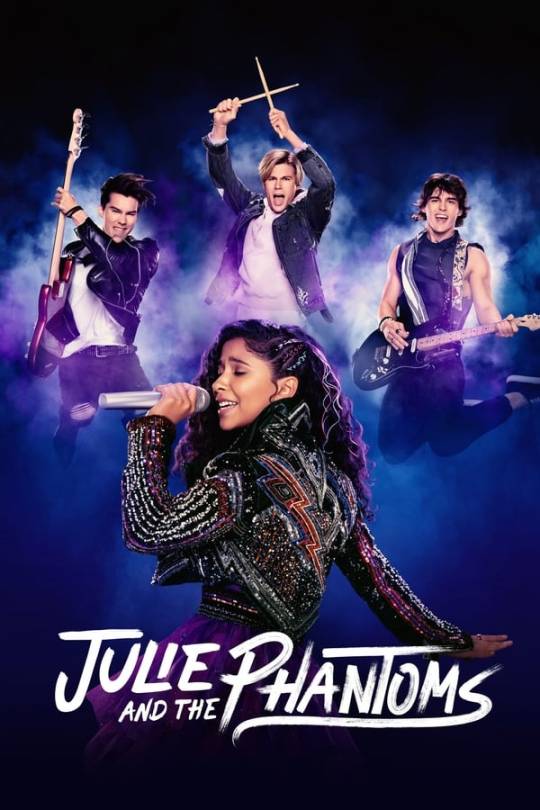
Julie and the Phantoms (JATP) is a one-season-wonder musical comedy series created by Dan Cross and David Hoge, with the notable executive production of Kenny Ortega (HSM, Descendants, Cheetah Girls, etc.). With the recent passing of her mom, Julie gets kicked out of her school’s prestigious music program for being unable to emotionally perform. When looking through her mom’s things she stumbles across a “Sunset Curve” CD and accidentally welcomes the “phantoms” into her world. Luke, Alex, and Reggie, AKA “Sunset Curve”, were a boyband from the 80s that died prematurely. After hearing Julie sing and realizing they can be seen when they play their music, they form a new band, Julie and the Phantoms.
youtube
youtube
While the show does employ a dual-focus narrative for the heteronormative pairing of Julie and Luke (never “resolved” because (a) the actor who plays Julie is a minor and Luke is not and (b) the creators were hoping for a second season, possibly with a follow-through for the more age-appropriate love interest, Nick) they also use it for the sort of rivalry that Robynn Stilwell discusses in Smash. Episode six, “Finally Free”, presents the culmination of the competition between Julie and her ex-best friend, Carrie, in their back-to-back musical performances. Carrie and her band, or rather, backup dancers, perform “All Eyes on Me”, a me-myself-and-I song dedicated to Carrie’s greatness and high social status. Though their performance is technically clean and impressive, it also solidifies a class and character difference between Carries and Julie: Carrie’s dad is a rich music executive and she is, in every way, a quintessential Disney-fied mean girl. Julie is by no means low-income, but her single-parent multi-child household and the recent loss of her mother do not position her as privileged either. Notably, Carrie is blonde and white and Julie is multiracial and brown. Though never directly stated, one may argue that this intersectional identity that Julie has is the “other cultural aspect” (Stilwell 384) used to provide deeper meaning for the show. Julie and the Phantoms perform “Finally Free” an uplifting song up to interpretation: free from grief, from judgment, from fear. All of the songs performed by Julie and the Sunset Curve boys stand out from Carrie’s due to their emotional depth and interpersonal interaction: Julie interacts with her bandmates, while Carrie’s are solely there for show.


youtube
The “inevitable coupling” in this series happens through an inevitable, albeit unconfirmed, grouping. In the first episode, we watch Sunset Curve interact with a waitress named Rose, to whom they gift a CD and t-shirt. As they exit the venue, Luke comments about how big their band is going to be, how much that waitress’s compliments resonated with him, and how excited he is to play the Orpheum. Minutes later when Julie’s looking through her mom’s things she stumbles across a Sunset Curve CD and t-shirt. We’re never told Julie’s mom’s name in the show, but given their physical similarities and how much Julie associates her with flowers, it’s widely considered that Rose was, in fact, Julie’s mom. In the final episode, Julie and the Phantoms perform at the Orpheum, fulfilling the band’s dream, and one of her mom’s. Almost every song the band sings together includes a duet section for Julie and Luke; singing/performing is where most of their connection and relationship advancement comes from. As Stilwell concludes, the creators employ duets and musical cinema to “create character relationships that would take longer to establish through normal exposition like dialogue...” (393).

With the exceptions of “Unsaid Emily” and “Perfect Harmony”, every musical interlude is incorporated fully into the physical and time constraints of the series, establishing this as a backstage musical. Most of their singing/playing is in preparation for a performance or purely for practicing and jamming together. There are lots of wide shots showing the band collectively in Julie’s garage, advancing the narrative as they perform.
@theuncannyprofessoro
15 notes
·
View notes
Text
I'm so glad you chose this show! Despite being a children's show and having incredibly silly moments, I've always felt that this show was a really effective satire on the music industry. I think it's also interesting that the show touches on the exploitation of child stars while airing on Nickelodeon, which, as we know, exploited children. Anyways, I like your response to the second question, and I think the show explored male friendships in a way that was very special and unique.
Panel Presentation: Big Time Rush (2009)
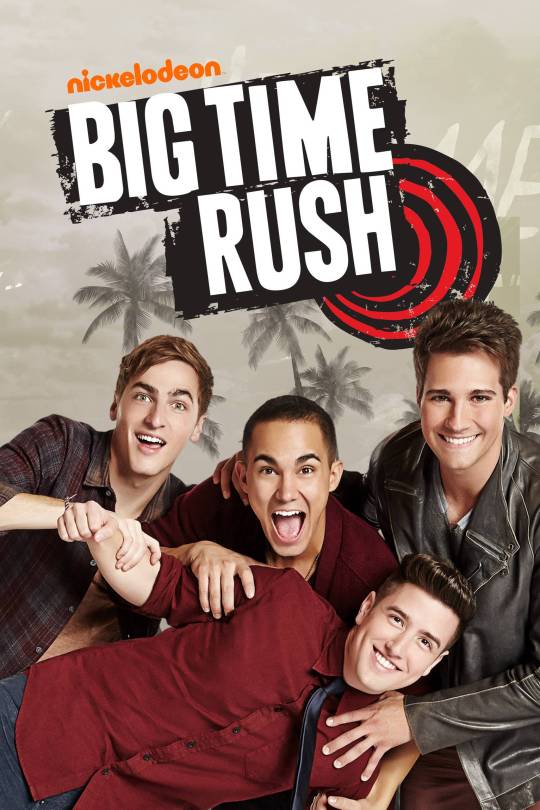
Nickelodeon’s TV series Big Time Rush follows the adventures of four hockey-playing best friends from Minnesota—Kendall, James, Carlos, and Logan (all named after their corresponding actors)—after they're selected to form a boy band. The show captures their humorous and often chaotic journey as they navigate the ups and downs of the music industry, fame, and friendship, all while trying to stay true to themselves and their roots. It's a blend of comedy, music, and the challenges of adolescence, set against the backdrop of their dream to become successful musicians.

How does the series use dual-focus narrative as a strategic storytelling tool beyond heteronormative romantic pairings?
Big Time Rush utilizes a dual-focus narrative in a way that extends beyond traditional heteronormative romantic pairings, similar to the examples of Smash and Nashville discussed in the article. Because Big Time Rush is focused on the band of friends (with occasional B plots featuring Kendall’s family), the focus of the series shifts from romantic relationships and applies the dual-focus narrative to explore themes of friendship, competition, and personal growth among the band members and their interactions with others. This strategy allows the show to address a broader range of relationships and conflicts, resonating with a wider audience by depicting varied forms of relationships and personal dynamics beyond the conventional romantic plotlines.
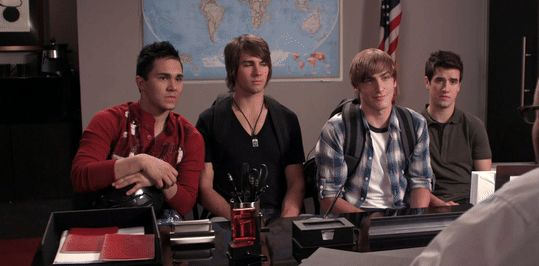
What are the “inevitable” couplings within the series and how are they accentuated through “cinematic” similarities and contrasts?
In Big Time Rush, "inevitable" couplings primarily highlight the evolving friendships and rivalries, not just fleeting romantic entanglements. The series employs cinematic techniques like strategic editing, emotive music, and parallel scene construction to enrich these dynamics. A prime example is the complex relationship between the band members and Gustavo Rocque, their producer. Their journey is marked by musical showdowns, dramatic conflicts, and heartfelt moments of unity, showcasing a spectrum of emotions that deepens the narrative. While the series does feature some romantic storylines—such as Kendall and Logan establishing significant relationships early on—these are not the sole focus. Instead, the series places a stronger emphasis on the bonds formed through shared struggles and triumphs in the music industry.
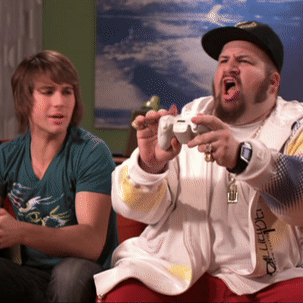
How does the series use musical numbers within and beyond the narrative world to replicate fairy tale, backstage, or folk musicals?
Big Time Rush leverages musical numbers to embody the essence of a backstage musical series, blurring the lines between the characters' real-life trials and their artistic expressions. Within the narrative world, the series uses these performances to delve into the personal and professional growth of the band members. Songs become a medium through which characters navigate the highs and lows of fame, friendship, and the music industry, offering viewers a glimpse into the creative process and the challenges of pursuing a career in entertainment. However, the musical numbers in Big Time Rush often go beyond the narrative, using the creation of these numbers as plot points in the series, giving the audience a sneak peek into the world of the music industry. This approach not only showcases the talents and hard work behind the scenes but also celebrates the communal joy of music. The series captures the spirit of backstage musicals by presenting a cohesive blend of storytelling and performance, where music acts as both a narrative force and a bridge connecting the characters with their audience.
youtube
Ultimately, Big Time Rush was created to capture the essence of the boy band phenomenon while appealing to a younger audience. Its inception was likely inspired by the success of real-life boy bands and the entertainment industry's interest in creating content that blends musical performances with narrative storytelling. The show aimed to entertain, of course, but also to inspire its audience with themes of friendship, perseverance, and the pursuit of dreams despite the odds. By showcasing the fictional journey of four hockey players turned pop stars, "Big Time Rush" tapped into the aspirational and relatable dreams of many viewers, offering both escapism and positive messages about hard work, loyalty, and creativity.
14 notes
·
View notes
Text
I think it is so interesting that a show about Black characters and music was created by Baz Luhrmann, whose Elvis was criticized for its lack of Black representation and its inability to unpack the ways Elvis appropriated Black culture and music. How is the "gaze" of the show's creators reflected in the show? On the other hand, in what was is the show still a form of positive and impactful representation, and an homage to hip hop history like you mentioned?
The Get Down (2016)
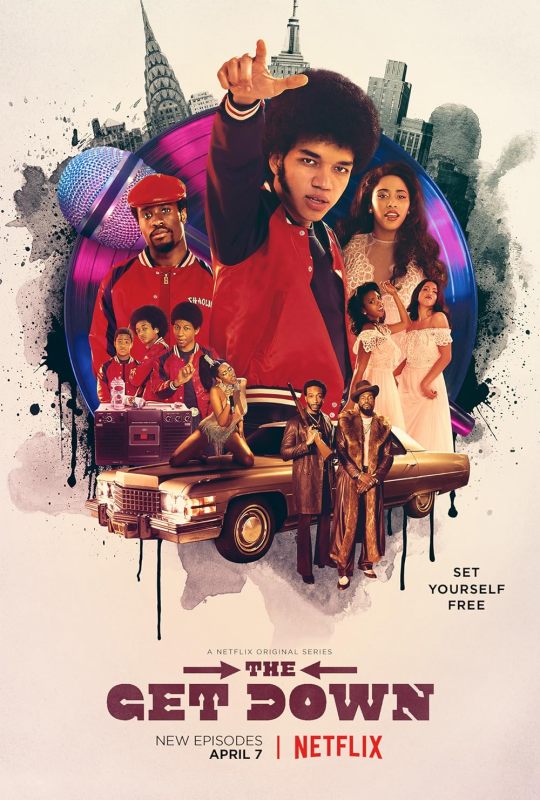
The Get Down is a television series created by Baz Luhrmann and Stephen Adly Guirgis. It premiered on Netflix in 2016 and consists of one season split into two parts. Set in the South Bronx in the late 1970s, the series explores the rise of hip-hop, disco, and punk music against the backdrop of a rapidly changing New York City.
The story follows a group of teenagers navigating the challenges of urban life while pursuing their dreams of music stardom. The main characters include Ezekiel "Zeke" Figuero, a talented poet and aspiring rapper; Mylene Cruz, a determined young singer with ambitions of becoming a disco star; Shaolin Fantastic, a streetwise graffiti artist and DJ; and other members of their diverse community.
The Get Down combines elements of drama, music, and historical fiction to depict the cultural and social dynamics of the era. The series is known for its vibrant visuals, dynamic musical performances, and engaging storytelling. It explores themes such as identity, ambition, love, and the power of art in the face of adversity.
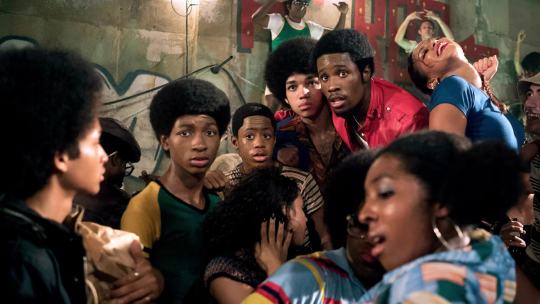
How does the series use dual-focus narrative as a strategic storytelling tool beyond heteronormative romantic pairings?
The Get Down employs a dual-focus narrative to delve into multiple layers of its characters' lives and the broader socio-cultural context of 1970s New York City. Beyond heteronormative romantic pairings, the series strategically utilizes this narrative tool to explore themes of identity, ambition, and social change. By intertwining the personal journeys of characters like Ezekiel and Mylene with the larger backdrop of the emerging hip-hop and disco scenes, the show creates a rich tapestry of interconnected stories that reflect the diversity of experiences within the community.
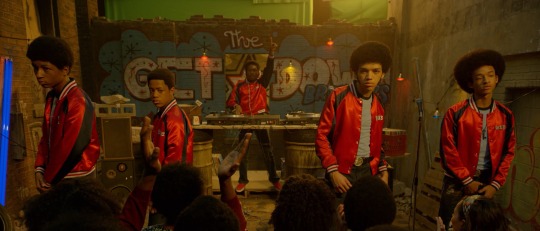
What are the “inevitable” couplings within the series and how are they accentuated through “cinematic” similarities and contrasts?
In terms of "inevitable" couplings, the series accentuates various relationships through cinematic similarities and contrasts. For example, the bond between Ezekiel and Shaolin Fantastic is portrayed with dynamic energy and shared passion for music and creativity. Their partnership is contrasted with the more traditional romantic coupling of Mylene and Zeke, highlighting the different forms of love and connection present within the narrative. Through visual motifs, such as parallel editing and juxtaposition of scenes, the series emphasizes the complexity of these relationships and their impact on the characters' lives.

How does the series use musical numbers within and beyond the narrative world to replicate fairy tale, backstage, or folk musicals?
Musical numbers in The Get Down serve as more than just performances within the narrative world; they replicate elements of fairy tales, backstage dramas, and folk musicals to enhance the storytelling experience. The use of music as a narrative device allows the show to explore themes of dreams, aspirations, and resilience in the face of adversity. Whether it's through elaborate dance sequences or heartfelt musical performances, these moments transport viewers into the characters' inner worlds, providing insight into their hopes, fears, and desires. By blending elements of fantasy and reality, The Get Down creates a unique and immersive musical experience that transcends traditional storytelling conventions.
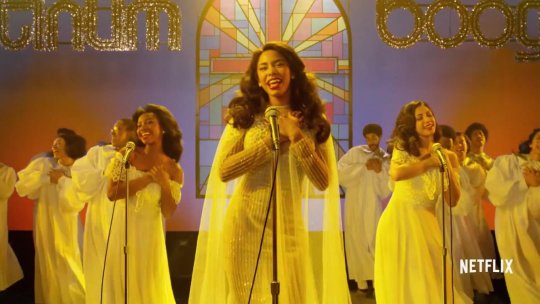
Overall, The Get Down was an amazing show that was gone too soon.<3
11 notes
·
View notes
Text
I did not know this show dealt with themes as dark as suicide. With what tone does the show convey these themes through song? Does the show employ a dark comedy/satirical tone, or are these songs performed completely straight-faced and serious?
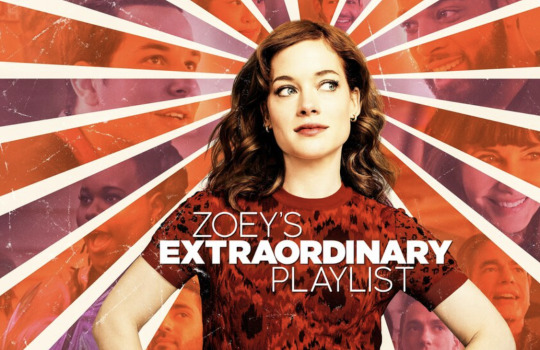
Zoey’s Extraordinary Playlist (2020-2021)
In "Zoey's Extraordinary Playlist," the dual-focus narrative technique serves as a strategic storytelling tool, transcending heteronormative romantic pairings to explore a rich tapestry of relationships and connections. While romance undoubtedly plays a significant role, the series delves much deeper, intricately weaving narratives of friendships, familial bonds, and professional dynamics.
youtube
Central to the series are the "inevitable" couplings, such as Zoey's relationships with Max and Simon. These relationships are not merely depicted as romantic pairings but are rather complex and multifaceted connections that evolve over time. Zoey's bond with Max, for instance, is portrayed with warmth, familiarity, and a shared history, while her connection with Simon is characterized by tension, chemistry, and a sense of the unknown. These nuances are accentuated through cinematic similarities and contrasts, underscoring the intricate dynamics of human relationships.
youtube
A defining feature of "Zoey's Extraordinary Playlist" is its innovative use of musical numbers to enhance storytelling. Drawing inspiration from fairy tales, backstage dramas, and folk musicals, these sequences serve to replicate the enchanting essence of these genres while simultaneously deepening the narrative experience. Whether it's characters breaking into spontaneous song or participating in elaborate dance numbers, the musical elements of the series create a vibrant, immersive world that invites viewers to become fully immersed in the characters' lives and experiences.
Furthermore, the series utilizes musical numbers to convey characters' innermost thoughts, desires, and emotions in a way that transcends traditional dialogue. Through song and dance, viewers gain unique insights into the characters' motivations and struggles, fostering a deeper connection with their journeys. This innovative approach not only entertains but also resonates on a profound emotional level, touching upon universal themes of love, loss, and self-discovery in a way that is uniquely captivating.
youtube
13 notes
·
View notes
Text
I loved the book sooo much so I'm kind of scared to watch the show and see what's different haha. How does the show handle its obvious real-world connections, like the clear parallels to Fleetwood Mac, and the fact that Riley Keogh, who plays a rockstar, is the granddaughter of literal Elvis?
Daisy Jones and The Six
youtube
How does the series use dual-focus narrative as a strategic storytelling tool beyond heteronormative romantic pairings?
The Prime Video miniseries "Daisy Jones & The Six" leverages the dual-focus narrative strategy, as outlined by Robynn Stilwell, in a way that transcends the confines of traditional heteronormative romantic pairings. While undeniable chemistry exists between Daisy Jones and Billy Dunne, the series explores other aspects of their lives as well. It explores the intricate, symbiotic creative partnership between Daisy and Billy, the profound sense of familial connection within The Six, and the complex challenges faced by a woman with immense ambition navigating a male-dominated music industry.
By expanding its focus beyond just romance, the series paints a more engaging story. It prioritizes exploring the complexities of artistic collaboration and the emotional dynamics of a tight-knit group over a singular romantic plotline. This approach allows for a more nuanced and compelling portrayal of the characters' relationships and struggles.
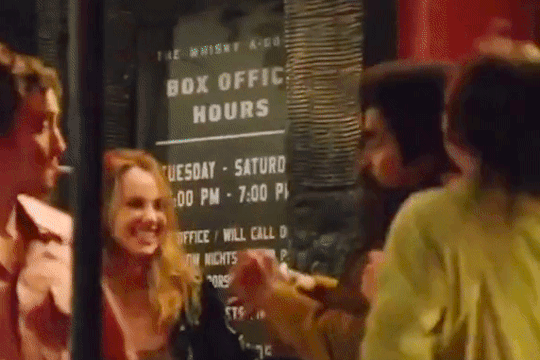
What are the “inevitable” couplings within the series and how are they accentuated through “cinematic” similarities and contrasts?
Although the series avoids the trope of forcing a romantic resolution between Daisy and Billy, it does utilize distinct cinematic techniques to accentuate certain pairings. Their intense on-stage chemistry is amplified through dynamic cuts that mirror the synergy of their musical connection. This echoes the concept described by Robynn Stilwell in Dual Focus Strategy in a Serial Narrative, where "This ‘inevitable’ coupling may be accentuated by paired songs or, more powerfully, by a duet linking the couple musically and emotionally, whether through a physical meeting, or a virtual one created with parallel editing that cuts back and forth between their individual spaces" [1]. However, when their creative visions diverge, contrasting close-ups highlight the emotional friction that arises.
In contrast, the relationship between Billy and Camila is portrayed through a lens of warmth connection. Soft focus and warm lighting bathe their interactions, highlighting the deep emotional bond they share.
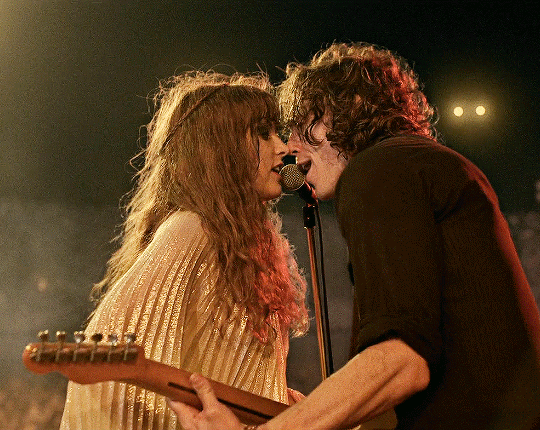
How does the series use musical numbers within and beyond the narrative world to replicate fairy tale, backstage, or folk musicals?
The musical numbers in "Daisy Jones & The Six" function not simply to showcase the band's performances, but also as narrative tools. The series' most compelling use of music lies in its ability to replicate the raw emotions and interpersonal conflicts that exist within the band. Intimate acoustic sets with stripped-down arrangements become a reflection of this backstage drama.
These stripped-down performances, reminiscent of the raw energy and emotional vulnerability often captured in backstage musicals, allow viewers a glimpse into the inner lives of the band members and the tensions that simmer beneath the surface of their polished stage personas.
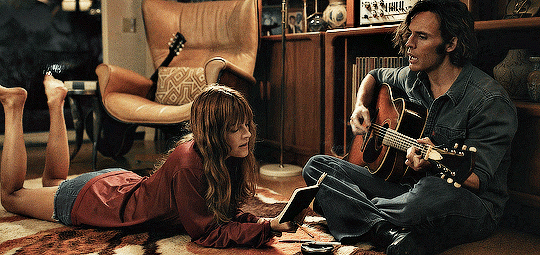
Works cited:
[1] Stilwill, "Dual Focus Strategy in a Serial Narrative",384.
13 notes
·
View notes